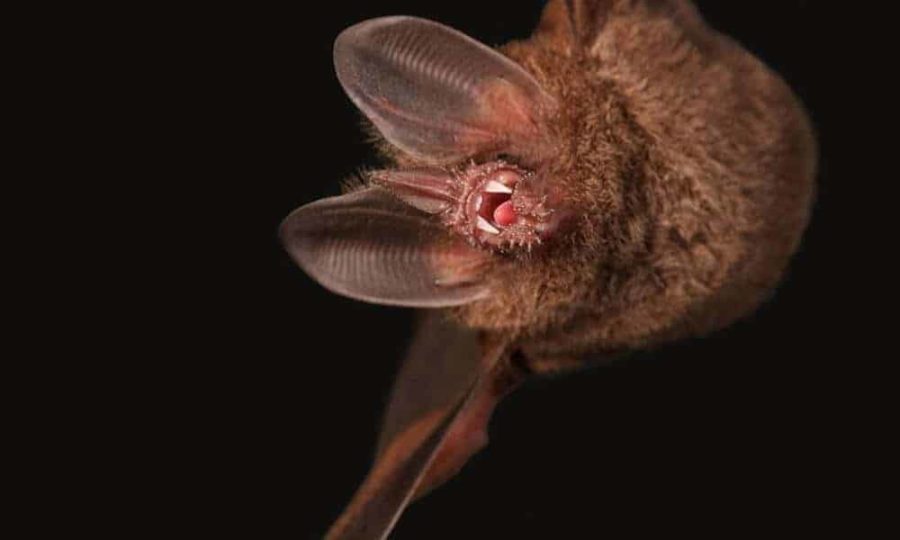What happens when a plastic surgeon meets a bat expert zoologist and a paleobiologist? No, it’s not a strange Halloween story about spooky bat dinosaurs but rather, a story about a new discovery about bats which may unlock vital clues about the causes of cleft palate in humans.
The story began when Dr David Orr from Trinity College Dublin, a plastic surgeon specialising in the treatment of cleft lip and palate at Our Lady’s Children’s Hospital and St James’s Hospital decided to take some time out to study evolutionary biology. Following a lecture on the evolution of bats by zoologist and bat biology expert Professor Emma Teeling of UCD, Dr Orr struck up conversation with Professor Teeling and paleobiologist Professor John Finarelli of UCD. The group realised that certain species of bats had a condition very similar to cleft palate in humans, not as an abnormality but as a normal part of their anatomy. This link had not been made previously so the team investigated it in detail by anatomical dissection, micro CT scans and careful examination of images of skulls of nearly 300 species of bats.
This is the first time that something similar to cleft palate has been described as a normal phenomenon in another animal and their research, recently published in the Journal of Anatomy, has opened up a vital new avenue to investigate what genetic changes underlie clefting in human children. Clefts affect approximately 1 in every 700 babies in Ireland.
Dr Orr explains how the discovery could help in identifying how and why clefts are formed in human children: “Because some species of bats have clefts and some don’t, by comparing their genomes we may be able to pinpoint what regions of the DNA are responsible for producing clefts. This might then give us a place to look for a similar phenomenon in humans. Mutations or variations in several genes have been investigated in humans for a link to cleft lip and palate, but apart from some rare syndromes there is no clear picture and there is certainly no ‘gene for cleft palate'”.
Some animal models of cleft lip and palate have been produced by mutating one or other of the important genes that embryos use to build themselves, but the resulting animals usually have other major malformations involving the head and other parts of the body. However, most children with a cleft lip and palate are in other respects quite normal because they don’t have major disruptive mutations of these important genes. The research team believe that it is much more likely that they have variations in subtle rather mysterious areas of the once, so called ‘junk DNA’. Although these areas of DNA do not code for proteins, they contain the complex ‘switches’ and ‘dimmers’ that regulate when, where and how strongly the protein-coding genes are expressed.
Dr Orr continued: “These embryo-building genes are so important that they change very little across evolution from species to species so again in the bats it is likely that the genetic cause of the clefts is a change in the subtle and mysterious ‘switches’ rather than the well-studied embryo-building genes. This new avenue for research is very helpful because only about 2% of the genome is made up of conventional genes that code for protein and these have been the most studied. The mysterious ‘switches’ are scattered throughout the other 98%, the so-called ‘dark matter’ of the genome.”
Dr Orr said: “When I set out to study evolutionary biology, it was out of pure interest and curiosity. I had no preconceived plan to find out anything useful. But that is how science really works – there is a value in looking at things just because you find them interesting. When you meet other people from different disciplines who are looking at the same thing you make unexpected connections and often come up with something useful.”
Professor Teeling, Director of the Centre for Irish Bat Research said: “The diversity and unique adapatations found in bats are providing novel ways to study and find unconventional solutions to human maladies. This is just another example of the benefit of studying and understanding these extraordinary mammals!”
Dr John Finarelli, Assistant Professor of Vertebrate Biology, UCD, said: “This project demonstrates the power of interdisciplinary research. Combining careful anatomical dissection and observation with genetics and developmental biology has the potential to provide us with insight into some of the mechanisms underpinning a fairly common congenital defect.” The paper is available at http://onlinelibrary.
If our reporting has informed or inspired you, please consider making a donation. Every contribution, no matter the size, empowers us to continue delivering accurate, engaging, and trustworthy science and medical news. Independent journalism requires time, effort, and resources—your support ensures we can keep uncovering the stories that matter most to you.
Join us in making knowledge accessible and impactful. Thank you for standing with us!

